Peter Dornauf – 20 September, 2016
The media are the message, to slightly misquote Marshall McLuhan, and artist Sorawit Songsataya, takes this reality as a point of reference to confront questions of contemporary identity via the use and appropriation of cartoon elements taken straight out of Disney. Here the saccharine and cute are posited against raw realities. A formal ornamental plant stand serves as cultural marker set against the smooth swollen forms taken from the “adorable” world of cartoon animation courtesy of the American mass media conglomerate.
Hamilton
Group exhibition
National Contemporary Art Award 2016
Selected and judged by Misal Adnan Yildiz
3 September - 4 December 2016
The art of artspeak was the winner on the night rivalling the art itself at points at this year’s National Contemporary Art Award, judged by Misal Adnan Yildiz, the current director of Artspace.
Things were “deconstructed” and “reconstructed”; “dialogue”, “discourse” and the ubiquitous, “conversation”, got served up. Stuff was “informed” by other stuff; “conceptual” got a work out as did the “language” of things: of politics, abstraction, of 3D forms. There was “exploration” and “engagement” with the artist described as a “seeker” and “archiver”. There were “metaphysical connotations” and “metaphysical intuitions” at play; things were “on-gong”, while other things were “contextualized”. The trend word “liminal” got an airing, but the prize had to go to Tony Nichols for the word “aletheia”, resurrecting a word used by Heidegger who resurrected it from the ancient Greeks. The plain old word, “truth”, just wasn’t good enough.
What this amply demonstrates is that artists themselves are constructed by their own clichéd and homogenised language. And it doesn’t stop there. They are also trapped by the limited and predictable range of concerns. From the topical issue of homelessness to the evils of racism, capitalism, gender dualism, planetary waste, terrorism and failed utopianism; unsurprisingly they all get trotted out.
Why is parading one’s virtues and vigorous chest beating so prevalent in New Zealand? Because politics is the only game in town. In addition, as art became more marginal in society, so its voice became more strident in an attempt to rescue itself from social irrelevance. Look at me! I do more than comely pictures.
Issues driven art, of course, must be careful in selecting the right causes. Poverty and the homeless is a sure bet and Tiger Murdoch plastered the gallery wall with replicated posters, of some homeless man lying on an urban bench. “We would like to make the invisible visible,” the artist pontifically intoned. I bristle at art that comes at me with such blatant designs on the viewer. It didn’t help that the artist descended into cliché by proclaiming that this was “the start of a conversation”.
One of the very few paintings, in the show of 34 works, was about the issue of environmental degradation. Oil Fields, by John C Johnston, acrylic on canvas, came out of the school of Neo-Casualism. A black blob of paint is surrounded by a wobbly handwritten text. Climate change like the problem of homelessness are serious and urgent contemporary concerns, but if I want propaganda, I’ll look for it at some politically rally. Art, of course, can be didactic, but do I want to be hit over the head with a hammer?
The same issue was dealt with by D Milton Browne in a photograph of a junk yard. The artist was at pains to alert the viewer to the fact that certain features in the image of his work entitled Departure, “conceptualizes” and “initiates a dialogue”. Pleeese.
Just in case we missed the point of his sculpture, Matt Ellwood made it abundantly clear in his title that he was seriously concerned with the serious issue of global capitalism. Portentously called Maquette for the Monument to Global Capitalism and the Free World, the artist himself was not averse to a little local capitalism in pricing the piece at $11,000 for his plywood and beeswax creation.
Issues don’t make art. But if art is going to deal with them, it had better deal with them artfully. And artist, Justin Spiers, did just that in his environmentally concerned photograph with its understated title, Nest Number Four. If we believe his story, the image was a found object, created by others, in this case, children, but it is the multiple ironies that abound in the work that make it artfully appealing. The message wasn’t laboured but simply endemic in the piece itself, full of delicious contradiction and absurdity, along with a touch of whimsy. It is a photograph of a dead bird placed in a plastic bag ‘nest’ made by children of the family who owned the cat, the killer.
In the sculpture category, Push me Pull me, a mixed media installation by Cachermaille & Bowmast, presented an assortment of hanging and floor laid works - aprons, smocks and tools the artists were inspired to construct during a residency in a light industrial area in Nelson. These soft sculptures (recalling Claes Oldenburg), have morphed from their origins to become surreal objects that in their new configurations - double-ended, suggest the celebration of collective and collaborative action of the workers. The visual conjunction of the familiar and unfamiliar works well here.
One issue and its treatment gave me pause and not in a good way. It was A Booth with Ocean Views (Self Portrait) by Christopher Ulutupu. It consisted of a photograph of the artist dressed up as a terrorist (orange jumpsuit, balaclava and gun) posed in front of blue sky alluding to some South Pacific paradise. The back story involved a terrorist-themed party the artist attended; come as a terrorist, held in Wellington where a photo booth was set up so that party goers could have their photo taken. What next? A Holocaust victim party, come as an emaciated Jew. The bad taste and morally dubiousness of the work is not saved by the coda in the blurb - “our vision of the horrific events of the world is skewed, leaving only a mirage empty and void of empathy”. This is true enough, but is the “art work” a case of mea culpa after the event?
The issue that had me crying “enough already” was one “explored” by Tony Nicholls, Essence of Art Part 1, and Rohan Hartley Mills, Floor Work 1. They both examined and deconstructed the nature of art. I think the world is ready to move on from this.
Conceptual art is all very sincere, earnest and heartfelt and one couldn’t get more serious and sober than Peter McLaren’s race sensitive pieces harking back to the bad old days of apartheid and segregation. His punning text, “No Colours” in his black and white sculptural work, It Could Not Possibly Happen Here, Could It? and the acrylic on board, Four Colours Only, did raise a smile but didn’t quite rescue it from terrible earnestness and inflammatory rhetoric.
One standout video piece was Monochronic, featuring hand-drawn animation, by Clara Wells. It was intriguingly constructed around rhythms and changing visuals (sped up) whose motif is the morphing circle. What begins as a satisfying dance aligned with the natural pulse of the heartbeat becomes, as the work progresses, discordant as the timing shifts and things fall out of sync. Perception of time itself becomes questioned.
Another issue, a perennial one that shows up at these functions, is the subject of the nature of the gallery space and the institution itself. This got a workout via duo Jonathan Organ and Jessica Pearless’ big shed in Blind: HI FI, Douglas Stichbury in To a Willing Person, Injury is not Done, and Mike Ting’s The Order of Things.
For relief, I stood in front of Matt Arbuckles’s Envelop, and simply enjoyed the abstract aesthetic of scratched lines dragged through black paint on a found object, in this case a 1946 aerogram.
The winner on the night though, Good Kisser, dealt with specific issues; gender ones. The two 3D printed vases, miniature ‘ceramics’ anthropomorphized with pouting extrusions, balanced on an ornate plant stand, spoke of the Self as constructed inside various detentions of contracted social life.
The media are the message, to slightly misquote Marshall McLuhan, and artist Sorawit Songsataya, takes this reality as a point of reference to confront questions of contemporary identity via the use and appropriation of cartoon elements taken straight out of Disney. Here the saccharine and cute are posited against raw realities. A formal ornamental plant stand serves as cultural marker set against the smooth swollen forms taken from the “adorable” world of cartoon animation courtesy of the American mass media conglomerate. These the artist imbues with “queer temporalities” and in such disparities the artist finds a frisson that reflects on what he describes as the strange and grotesque psyche of living in the contemporary world.
Why did it win? Because of the delivery. Witty, whimsical, Pop culture based and thus “contemporary”. And, of course, the issue is very hip. A current focus for sure, and popular.
Peter Dornauf
Recent Comments
John Johnston
I might refer to myself as a Neo-Casual Propagandist from now on. Thanks Peter, it's quite catchy.
Ralph Paine
Truth to tell, I didn't even give yr piece a cursory read thru - more like a reading between the ...
Peter Dornauf
Let me just say at the outset that some of my best friends are conceptualists. Duchamp and I are best ...
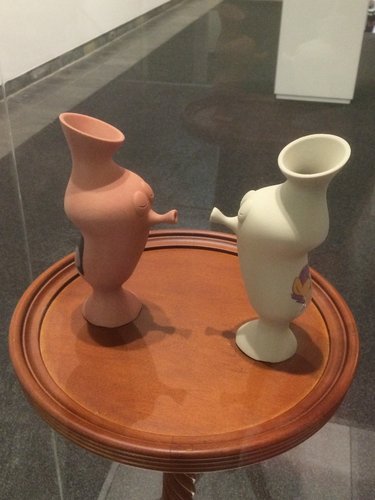

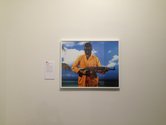



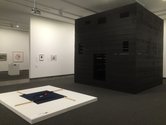
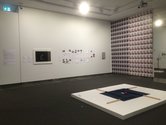

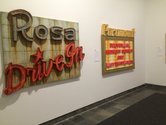
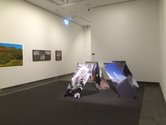
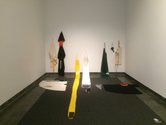
 Two Rooms presents a program of residencies and projects
Two Rooms presents a program of residencies and projects Advertising in this column
Advertising in this column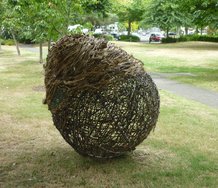
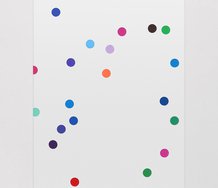
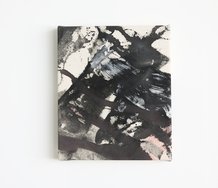
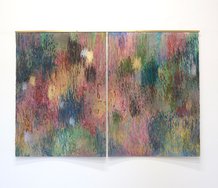
This Discussion has 10 comments.
Comment
Rohan Hartley Mills, 7:26 p.m. 20 September, 2016 #
Ouch!
Some valid observations though.
Emil McAvoy, 11:28 a.m. 21 September, 2016 #
Is it possible to replace these photographs? I can't see the work. The Museum should supply you with professional quality documentation for media use.
John Hurrell, 11:45 a.m. 21 September, 2016 #
You are absolutely right, Emil, and the author and I discussed this issue. The trouble is the Museum doesn't employ an inhouse photographer, and so it never documents its own shows. With various budget cuts from council over the years it can't afford to.
Emil McAvoy, 12:17 p.m. 21 September, 2016 #
Thanks John. That's unfortunate. Here's hoping someone else steps up and provides some.
John Hurrell, 12:51 p.m. 21 September, 2016 #
If you look at the link I provided at the start, you'll see images of individual works on the institution website. There is a Facebook link provided too. However that is not the same as seeing how Adnan has hung his selection in the actual space.
Emil McAvoy, 1:14 p.m. 21 September, 2016 #
Thanks John, good to see a selection of strong images there.
Ralph Paine, 12:54 p.m. 21 September, 2016 #
OK, so here’s a critic who appears to have MORE ISSUES THAN VOGUE of his own telling us that art ain’t made outta issues.... WTF?
A while back I watched online a very savvy interview/talk by Hal Foster at The Kitchen, NYC, September 2015. At the time I noted in my diary the four main “issues” Foster considered material of/for contemporary art:
* The contemporary as a time of “emergency”
* Reality as a “ripped reality” (double meaning)
* The staging of (a) “damaged subjectivity”
* “Positive barbarism” vs. “Bourgeois nihilism” (Benjamin)
Guess I’d sway towards placing all ART COMPETITIONS on the side of bourgeois nihilism, but once that issue has been outted from the discussion then all I see on display here - & I’m lovin’ this bad 70s photography - is emergency, ripped reality, and damaged subjectivity. And there’s even a hint or two of positive barbarism - which the good bourgeois critic readily-all-too-readily tut tuts.
If Mr D encourages us in thinking that some weirded out world is more than ready to move on from all this then I’m left wondering: WHERE the f_ck TO?
PS & FYI Heidegger’s concept “aletheia” does not translate cleanly and effortlessly into the modern English word “truth”. Rather, it has a piquancy of meaning all of its own - which I’m guessing is why the artist used said concept in the first place. Ditto the other words/concepts the use of which Mr D so gleefully derides.
Peter Dornauf, 3:04 p.m. 22 September, 2016 #
Let me just say at the outset that some of my best friends are conceptualists. Duchamp and I are best of buddies and Tracy and myself are like that, (fingers crossed).
It's a poor show when someone has to stoop to misrepresenting what one has said in order to score points. The most cursory perusal of my piece would alert even the lazy reader to the fact that I am not deriding art that deals with issues. My beef is with how they are delivered. If I want a sermon, I'll go to church. I'm also tired of the same old trendy issues popping up, the same old drum beat. I'm also weary of art that stares at its own navel too long. It's narcissistic. I'm also cynical about political art, the current darling. It is indulgent, naive and an act of hubris on the part of the artist who thinks their self-important jottings are going to make a blind bit of difference. Want to change the world? Get out of the studio and march in the streets. And then there's the language. It all comes out of the same box and is over inflated.
But, but, when conceptual is done well, it beats all other forms of art hands down. Justin Spiers "Nest Number Four" did just that. So did "Good Kisser" when I think about it.
Ralph Paine, 4:16 p.m. 22 September, 2016 #
Truth to tell, I didn't even give yr piece a cursory read thru - more like a reading between the lines.
Given the little policing policy you've just written above, I'm figuring I was pretty much on the money.
John Johnston, 10:30 p.m. 11 October, 2016 #
I might refer to myself as a Neo-Casual Propagandist from now on. Thanks Peter, it's quite catchy.
Participate
Register to Participate.
Sign in
Sign in to an existing account.